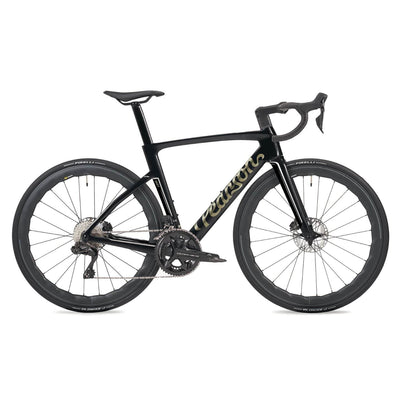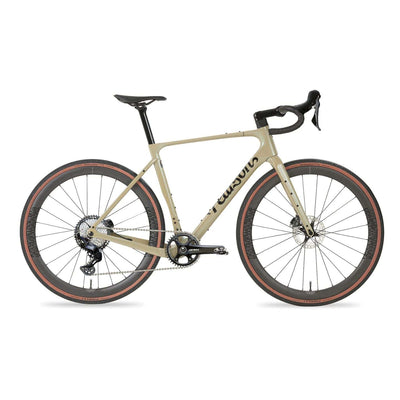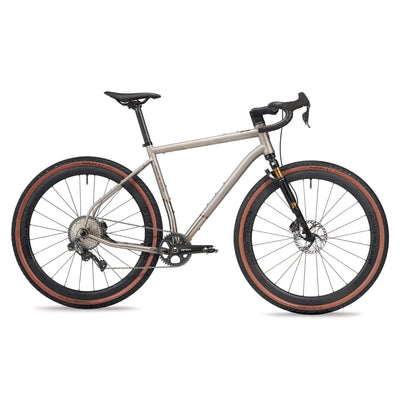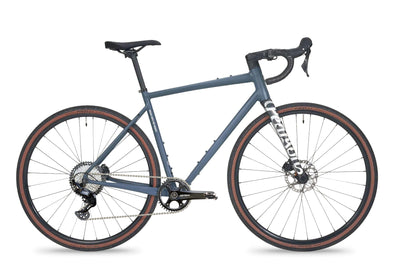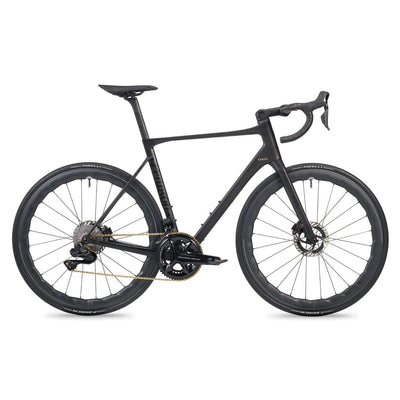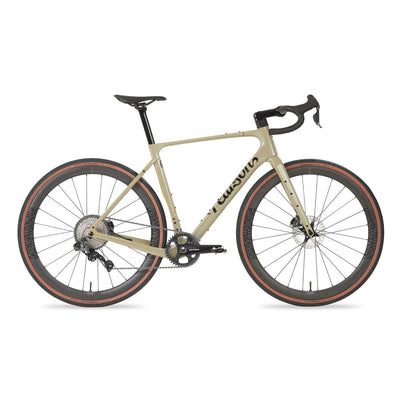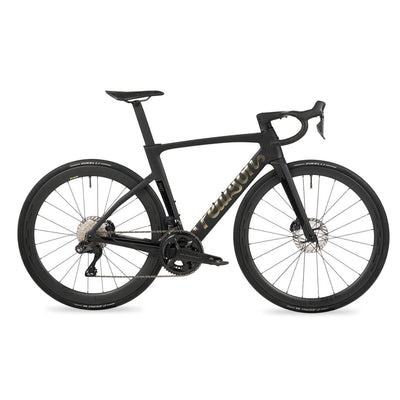How to keep your commute interesting
If you’re returning to work in the office, commuting by bike is a great way to keep fit. You can escape from public transport, saving yourself some cash and avoiding the crush with other commuters while there’s still a risk of Covid.

But following the same route each day can get a bit tedious, particularly if it includes busy roads and lots of stops and starts and you may find your motivation flagging, especially when after a few weeks it’s still cold, damp and dark and winter seems to be dragging on.
There’s a lot you can do to liven up your commute and keep yourself motivated though and we’ve got a few ideas to help you out.
Keep a record
The biggest incentive to stick to riding to work is keeping track of your rides. It’s always motivating to see how much distance you’ve covered each week or month and how much time you’ve spent riding.
Cycling can generate loads of data on whether you’re getting faster or fitter. You don’t need to spend a fortune to obtain it either: there are loads of free smartphone apps which will record your rides. Strava and Ride With GPS are two of many apps that include a ride logging function while an entry-level cycling computer won't break the bank.
It’s quite simple to supplement that with heart rate, either by buying a strap, which is relatively inexpensive, or using a smartwatch with a built-in optical heart rate monitor. You’ll get data on how your average and peak heart rate during a ride change as you continue to ride. You can add power data too, to track changes in that and keep closer tabs on calories expended, although a power meter is a much more expensive item.
Logging how much money you’re saving by not driving or taking the bus or train also helps!
Find a fellow commuter

If you can find someone of comparable ability who is riding the same route or part of it, riding together is a great motivator to keep going. That’s particularly true when you’ve agreed to meet up, look out of the window in the morning and there’s a steady drizzle. You wouldn’t want to let your riding partner down would you?
Mix up your routes
It’s tempting just to follow the shortest route between A and B, although that’s quite likely to take you along busy roads with lots of traffic lights and other obstructions. That might not be the quickest way though and you might find that a slight diversion onto quieter roads will be faster as you’ll be able to keep going more steadily. How do you find alternatives?
Check on-line resources

Sustrans’s route maps of the National Cycle Network are a good place to find traffic-free or low traffic routes that you might be able to take as an alternative to your normal way into work, and which may not involve a significant detour but will make for an easier and potentially faster ride.
CycleStreets is another resource which will map routes between any two points in the UK and, usefully, gives you three options: fastest, quietest and balanced.
Check heatmaps

Finding out where other cyclists are riding is a good way to track down some alternatives, with some apps providing heatmaps of routes most frequently logged by their users. You can do this on Strava, although you need to pay for a subscription to access its route planning functions. You can sign up for a free trial though if you don’t want to commit.
Garmin Connect has similar functionality and it’s free. Since so many cyclists have Garmin devices, it’s got a lot of data to go on and you can use Popularity Routing in its Courses function to plot a route to follow.
Look for cut-throughs
If you want to be more creative about finding some alternative routes, a good place to start is Google Streetview. You might spot an alleyway or bridlepath that you’ve not seen on your commute and that will take you onto a whole new set of roads to take you towards your destination. Even if it’s not rideable, a short walk might make for a faster overall commute.
Ordnance Survey and other maps may also help you pick out some alternatives. Try Streetmap.co.uk which has OS maps at a range of resolutions.
Go off-road

Taking an off-road route into work is a great way to make the commute less stressful. In addition to the traffic-free parts of the ride, it’s likely that you’ll be able to take quiet back streets to access your off-road section.
Many car-free tracks are tarmacked, so your ride speed might not be that much slower than on-road and even if they’re not they can often be ridden on a road bike - at least when it’s dry.
Of course, a gravel or adventure bike like our Off Grid is ideal for this type of commute, with its stable handling and wide, grippy tyres, but you shouldn’t feel held back from riding a road bike or hybrid off-road.
Often just a short section of unpaved track can totally change your ride; I had a route into work that included under a kilometre of bridleway along a retired train track. It was sometimes muddy, but I could ride it carefully on a road bike and it took me from a busy road heading to a dual carriageway onto a network of low traffic country lanes.
Canal towpaths are also a great way of escaping traffic and mixing it up. They’re often paved and many provide a fast, direct route into the centre of town. They’re popular with dog walkers though, so you may find yourself having to slow down to pass.
Mix cycling and train
Often it’s the last part of the ride into town that’s slowest and most tedious. You might find yourself on busy roads and with lots of stops and starts. If that’s your commute, riding to a railway station that’s a bit further out, even if it’s not quite in the right direction, then taking the train a few stops might be more enjoyable than riding the whole way.
Train companies can be fussy about taking bikes on the train, but you might be able to take the first off-peak train in the morning and still get into work at a reasonable time if your employer offers a bit of leeway on start time. It helps if you’re not travelling to a terminus, as off-peak rules usually apply to arrival times at the train’s final destination.
When Cycling Weekly was based in Croydon, I used to cycle the first hour or so to an intermediate station, then take the first off-peak train the rest of the way. I still got in by 9:30, avoided the most busy roads and saved a bundle on train fares too.
Challenge yourself

It’s not just recording your overall distance and time that can brighten up your commute. Setting some intermediate goals on your ride can add a challenge. Strava is a great way to keep abreast of your performance on shorter segments.
Log your ride on Strava and you’ll probably find you’re travelling through some ready-made segments and can see how fast you’re riding them each day. If you don’t want the whole world to see your times, you can make your rides private and you can filter the results for the segment to show just your times, so your data isn’t lost among other peoples’ times.
Make your own Strava segments
If you don’t see a segment that suits, it’s easy to set up your own segments on Strava, making them either public or private. You don’t need to subscribe, as it’s free for all Strava users. On the computer app just select the three dots from the menu, then the Create Segment option. You can then trim your ride on the bar on the page to move your start and end points to where you want them, zooming in on the map to make sure you’ve got them right.
Once you’re happy, hit Next. Strava will check for duplicates and give you the choice of creating and naming your new segment and making it public or private. If you keep it private, it will be easier to keep track of your times over your commutes; make it public and you’ll see how the competition is doing too.
If you make your rides public, don’t forget to hide the zones around your start and end points on Strava, so it’s less easy for a potential bike thief to work out where your bike is stored.
Set up some intervals

Your Strava segments don’t need to cover long stretches of your ride. Set up a few segments of 0.5km or less on your route which are well spaced and you can get in some high intensity interval training. Choose some safe sections of road without too many junctions, where you’re less likely to be bothered by other road users and ride these segments hard, resting up between them. If there’s too much traffic on a particular day, you can always skip one or two.
You should find that you’ll quickly up your anaerobic capacity and overall cardio fitness.
Document your ride
Documenting your ride will help keep things interesting. You could take photos of specific places each week or month, to see how they change over the year and record a narrative of events and things you’ve seen along the way.
Komoot is a great place to record narrative and you can add photos and video too. Strava and Garmin Connect let you add photos and text to your ride and say how you were feeling.
Go longer

There’s always the option to up your training miles by taking a longer route into the office or back home. That might not be so attractive when it’s still dark in the mornings and evenings and you’re maybe not at your fittest, but once the days get longer and warmer, an extra hour or two at the start or end of the day might let you take in some country lanes while there’s not much traffic.
It’s a good option to mix with a train ride to your final destination too.
Get kitted out
Finally, make sure you’re equipped for the ride and the weather. We can assist here with our comprehensive range of clothing, components and accessories. Read our post on how to winterise your bike to help keep yourself comfortable and our guide to bike lights to help keep you safe.


